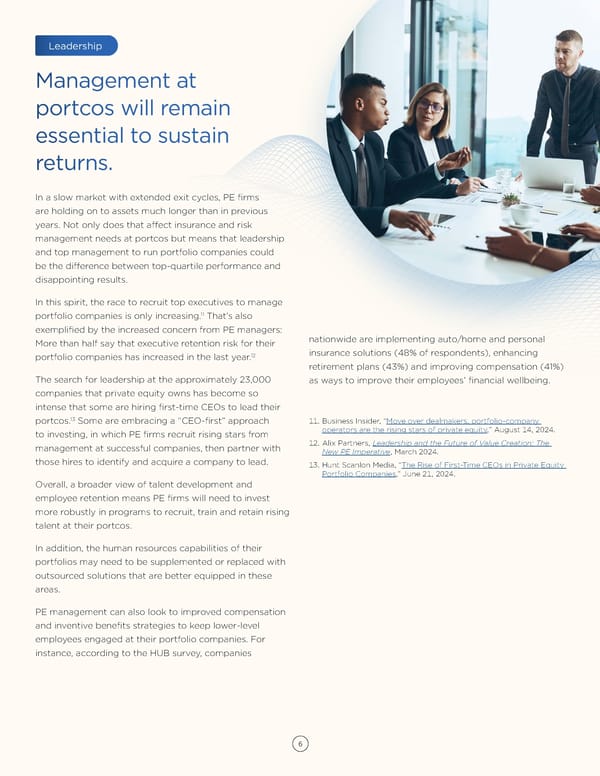Leadership Management at portcos will remain essential to sustain returns. In a slow market with extended exit cycles, PE firms are holding on to assets much longer than in previous years. Not only does that affect insurance and risk management needs at portcos but means that leadership and top management to run portfolio companies could be the difference between top-quartile performance and disappointing results. In this spirit, the race to recruit top executives to manage 11 That’s also portfolio companies is only increasing. exemplified by the increased concern from PE managers: More than half say that executive retention risk for their nationwide are implementing auto/home and personal 12 insurance solutions (48% of respondents), enhancing portfolio companies has increased in the last year. retirement plans (43%) and improving compensation (41%) The search for leadership at the approximately 23,000 as ways to improve their employees’ financial wellbeing. companies that private equity owns has become so intense that some are hiring first-time CEOs to lead their 13 11. Business Insider, “Move over dealmakers, portfolio-company portcos. Some are embracing a “CEO-first” approach to investing, in which PE firms recruit rising stars from operators are the rising stars of private equity,” August 14, 2024. management at successful companies, then partner with 12. Alix Partners, Leadership and the Future of Value Creation: The New PE Imperative, March 2024. those hires to identify and acquire a company to lead. 13. Hunt Scanlon Media, “The Rise of First-Time CEOs in Private Equity Portfolio Companies,” June 21, 2024. Overall, a broader view of talent development and employee retention means PE firms will need to invest more robustly in programs to recruit, train and retain rising talent at their portcos. In addition, the human resources capabilities of their portfolios may need to be supplemented or replaced with outsourced solutions that are better equipped in these areas. PE management can also look to improved compensation and inventive benefits strategies to keep lower-level employees engaged at their portfolio companies. For instance, according to the HUB survey, companies 66
 Private Equity Strategies for a Shifting Market Page 5 Page 7
Private Equity Strategies for a Shifting Market Page 5 Page 7